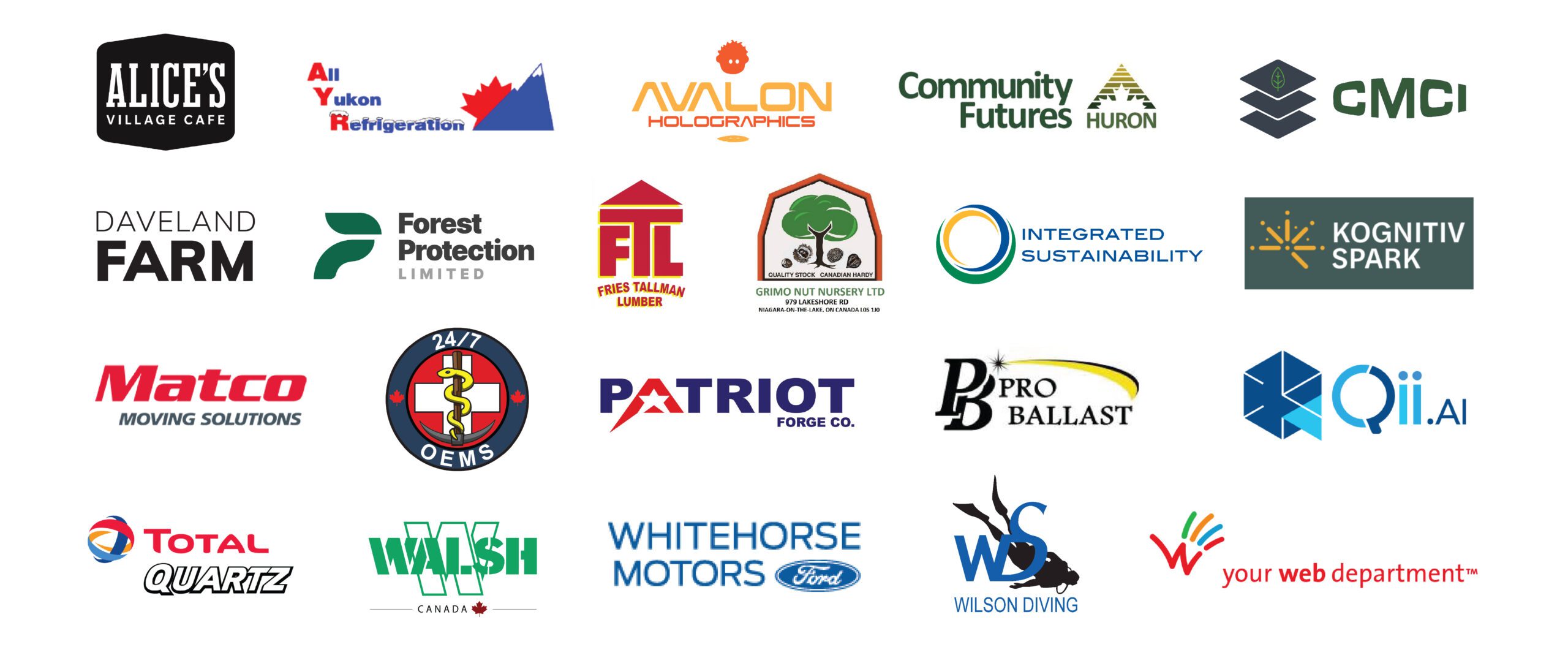Challenge Factory supports and partners with purpose-driven organizations that serve Canadians from coast to coast to coast. Throughout our 10+ years working to bring together employers that need skilled hires and military Veterans transitioning into civilian careers, our partners have been many.
We give thanks to every partner and participant who helped make our national impact study possible. Through their generous support and commitment, we measured the impact that our three Veteran hiring resources have on employers—because understanding how resources help is as important as creating them.
Funding Acknowledgements
Challenge Factory is grateful for the generous financial support of Veterans Affairs Canada’s Veteran and Family Well-Being Fund. The opinions and interpretations in our publications are those of Challenge Factory and do not necessarily reflect those of the Government of Canada.

Acknowledgments
This project was supported by a fantastic advisory committee, with many thanks to the following members:
- Sara Dunkley, President, Stellar Outdoor Advertising
- Namita Joshi, Chief Program Officer, True Patriot Love
- Bruce McAlpine, President, Fulcrum Search Science
- Chris Stoyles, Master Corporal (Ret’d), Assistant Superintendent, Multiplex Global
Our grateful thanks also go to Kevin Cameron, National Manager, Military Transition Engagement & Partnerships (MTEP), Canadian Armed Forces, and Cindy Tessier, Senior Operations Manager, Veterans Affairs Canada.
National study participants
Challenge Factory would like to acknowledge the more than two dozen business owners, organizational leaders, and hiring managers who participated in our national impact study, including:
| Chris Blondeau | Todd Hirtle | Ailsa Pella |
| Paul Chato | Kaity Hutchison | Charles Richer |
| Matthew Clancey | Lance Lehman | David Sennett |
| Rebecca Cook | Tim Meana | Mark Stables |
| Paul Dannenberg | Ashani Missier | Sarah Valli |
| Larry Davis | Paul Nichol | Sheri White |
| Thomas Green | Anne Marie Papp | Tina Woodland |
| Linda Grimo |
This is a representative subset of the employers who consented to be acknowledged publicly. The remaining participants chose to remain anonymous.

Study methodology
Challenge Factory created three free resources that are designed to help employers find, hire, and retain military Veterans—and understand why they should want to:
- The Canadian Guide to Hiring Veterans
- MasterClass in Hiring: Tap into the Hidden Talent Pool of Canada’s Veterans
- Hidden Talent: A Challenge Factory Podcast
Then we recruited business owners, organization leaders, and hiring managers across Canada to explore the resources and help us assess their impact. In four online surveys over a six-month period, we asked resource users about their hiring experiences and perceptions of Veterans.
- Survey 1: Right before they began exploring their hiring resource of choice
- Survey 2: Right after they finished exploring a resource
- Survey 3: Three months after initially exploring a resource
- Survey 4: Six months after exploring a resource
Challenge Factory’s national impact study expands on the foundation of research, methodologies, and market awareness that has informed our other work over the past ten years to close the gap between military Veterans and employers.
Primary data collection consisted of four online survey questionnaires with business owners, organizational leaders, and hiring managers across Canada. The surveys were both cross-sectional and longitudinal, and designed to elicit data about their general hiring practices, use of the hiring resources, and perceptions of military Veterans.
This approach allowed us to conduct a combination of descriptive and analytical research. Descriptive research investigates the “what” of an unknown and focuses on describing, comparing, and measuring, while analytical research investigates the “how” and “why” of an unknown and focuses on understanding cause and effect.
We recruited study participants from the project team’s professional networks, circulated the Call for Participants to professional associations across Canada, and sent out “cold call” emails using publicly accessible business directories.
Study participants chose one of the three hiring resources to explore, completed the first survey before beginning it (pre-intervention), then completed the second survey immediately after (post-intervention). This cross-sectional research allowed us to gather data about participants’ self-reported use of the resources, as well as assess the resources’ immediate impact on their knowledge, skills, and mindsets with respect to hiring and Veterans.
Study participants completed a third survey three months after initially exploring their hiring resource of choice, and a fourth survey six months after exploring it. This longitudinal research allowed us to track any self-reported longer-term changes in participants’ behaviours, preferences, and attitudes about the hiring resources and Veterans.
In addition to these four survey questionnaires, we collected two sets of data from the MasterClass study participants using the built-in evaluation tools provided by the online learning platform that the hiring resource is hosted on. The two sets of data are: 1) “module round-up” surveys at the end of each of the five learning modules, and 2) progress reports about each user’s activities and completion rate.
Analyzing the data, we work to identify:
- key patterns and insights about employers’ hiring practices, use of the resources, and perceptions of Veterans;
- gaps in and needs for employer knowledge, learning, or awareness raising about Veterans;
- curriculum design principles for employer-based hiring resources;
- future directions for Challenge Factory research; and,
- recommendations that can inform transition and job development programs offered to Veterans and employers through VAC, CAF, and other third parties.
Before publication of any analysis, drafts are circulated to the project’s advisory committee for review and validation. Their feedback is used to refine, deepen, and finalize our analysis and insights.
Due to the heavy commitment required of participants and project time constraints, this study used a small sample size of 26 business owners, organizational leaders, and hiring managers. Participants came from small- to medium-sized businesses and non-profit organizations across the country, including the Northwest Territories, Yukon, British Columbia, Alberta, Saskatchewan, Manitoba, Ontario, Quebec, New Brunswick, and Newfoundland and Labrador.

